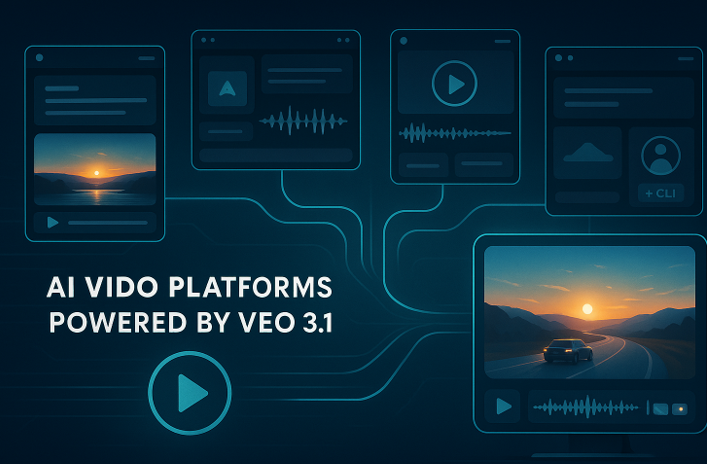How to Create a Digital Marketing Strategy That Drives Results
In today’s hyper-connected world, digital marketing has become a cornerstone for businesses seeking growth, visibility, and profitability. A digital marketing strategy outlines how a company will use online channels to achieve its marketing objectives. Whether your goal is to generate leads, drive traffic, or boost conversions, having a clearly defined strategy provides direction and ensures all efforts are aligned.
Why Strategy Matters
Without a cohesive plan, businesses risk wasting resources on fragmented tactics that yield minimal results. Whether you're working independently or with a digital marketing agency, this guide will walk you through the key steps to create a digital marketing strategy that not only delivers results but also evolves with changing market dynamics.
Set Clear and Measurable Goals
Every successful digital marketing strategy starts with well-defined goals.
The SMART Framework
These objectives should follow the SMART framework: Specific, Measurable, Achievable, Relevant, and Time-bound. For example, instead of saying "increase website traffic," aim for "increase website traffic by 25% in six months."
Aligning Marketing and Business Goals
Aligning your marketing goals with overall business objectives ensures that every campaign contributes meaningfully to your bottom line. Clear goals keep your team focused, facilitate better decision-making, and provide a benchmark for success.
Know Your Audience Inside and Out
Understanding your target audience is crucial for crafting personalized and effective marketing campaigns. A Shopify Agency can provide tailored solutions to enhance your e-commerce experience, ensuring that your site aligns with your audience's preferences.
Building Buyer Personas
Start by developing detailed buyer personas that include demographics, behaviors, motivations, and pain points. This can be achieved through tools like Google Analytics, CRM data, customer surveys, and social media insights. Additionally, advanced platforms like Weopi AI can support this process by offering features such as interactive conversation, research support, and behavioral analysis through its chatbot capabilities.
Personalization and Channel Selection
Knowing your audience allows you to tailor content, messaging, and offers that resonate, ultimately improving engagement and conversion rates.
Conduct a Competitive and SWOT Analysis
To stand out in a crowded digital marketplace, you must understand your competition.
Competitor Insights
Conduct a competitive analysis to identify what your top competitors are doing well and where they fall short. Examine their content, keywords, social presence, and engagement tactics.
Internal Evaluation
Perform a SWOT analysis to evaluate your own Strengths, Weaknesses, Opportunities, and Threats. This dual analysis provides strategic insights into market gaps and internal areas that need improvement.
Choose the Right Digital Marketing Channels
With numerous digital channels available, it's important to focus your efforts on those that align with your goals and audience preferences.
Channel Overview
These may include SEO for organic visibility, PPC for instant traffic, social media for engagement, email marketing for nurturing leads, and content marketing for long-term authority.
Audience Behavior and Channel Fit
Select platforms where your audience is most active. Diversifying your channels also helps mitigate risks and broaden reach.
Create and Optimize High-Value Content
Content is the backbone of any digital marketing strategy.
Types of Content
This includes blog posts, videos, infographics, case studies, and webinars tailored to guide potential customers through each phase, plus on‑brand visuals created quickly with an AI Image generator to scale variations for different channels.
For example, during the awareness stage, content like introductory blog posts or videos on dropshipping ads can help educate audiences on effective advertising strategies. As prospects move to consideration and decision stages, more in-depth resources such as case studies or webinars on optimizing dropshipping ad performance can help build trust and drive conversions.
To add even more value to your creative workflow, a UGC ad maker can streamline the production of authentic, user-generated style video ads that convert. These tools help brands turn scripts, testimonials, and product clips into polished ads without hiring creators every time. With faster turnaround and scalable variations, you can consistently produce high-performing UGC content for multiple platforms.
SEO and Engagement
Use SEO best practices to improve visibility, ensure mobile responsiveness, and include strong calls-to-action. Regularly audit your content to maintain relevance.
Implement Marketing Automation and Tools
Leveraging marketing automation tools can significantly boost efficiency and effectiveness.
Key Tools and Benefits
Platforms like HubSpot, Mailchimp, and ActiveCampaign streamline tasks such as email campaigns, lead nurturing, and customer segmentation. One key category to include in your toolkit is social media management tools, which help you schedule, monitor, and analyze all your social channels from a unified dashboard. In addition, integrating HR software with your marketing stack can improve cross-team workflows and employee engagement efforts.
Integration and Scalability
These tools also offer robust analytics and can be integrated with your CRM for a holistic view of customer behavior. To keep these processes organized, many teams use marketing planning software to coordinate campaigns and maintain visibility across projects.
Allocate Budget and Resources
A well-planned budget ensures that your digital marketing strategy is both sustainable and scalable.
Budget Planning
Start by identifying your most important goals and allocate resources accordingly. Break down the budget into categories like tools, paid ads, and personnel.
In-House vs. Agency
Evaluate whether to keep operations in-house or understand the benefits of outsourcing digital marketing services. A clear budget prevents overspending and maximizes ROI.
Track Performance with KPIs and Analytics
Measuring success is crucial for continuous improvement.
Defining KPIs
Define key performance indicators (KPIs) that align with your goals—conversion rates, click-through rates, cost per lead, and ROI.
Tools and Insights
Utilize tools like Google Analytics, SEMrush, and Facebook Insights to collect and analyze data. Regular performance reviews ensure your strategy remains data-driven. For deeper insights into campaign effectiveness across channels, consider using a marketing attribution platform to understand which touchpoints drive the most value.
Adjust and Improve Continuously
Digital marketing services are dynamic, requiring constant adaptation.
Optimization Techniques
Use insights from analytics to tweak and optimize campaigns. A/B test different elements like headlines, CTAs, and visuals.
Staying Agile
Monitor trends and be open to experimenting. Continuous improvement ensures your strategy evolves with audience needs and market changes.
Conclusion
Creating a digital marketing strategy that drives results is not a one-time task but an ongoing process.
The Value of Strategic Planning
From setting goals and understanding your audience to choosing the right channels and analyzing performance, each step plays a crucial role in success.
Long-Term Growth
With continuous monitoring and adaptation, your digital marketing plan can deliver sustained growth and long-term value. Start today by building a strategy that aligns with your business goals and adapts to the ever-changing digital landscape.







